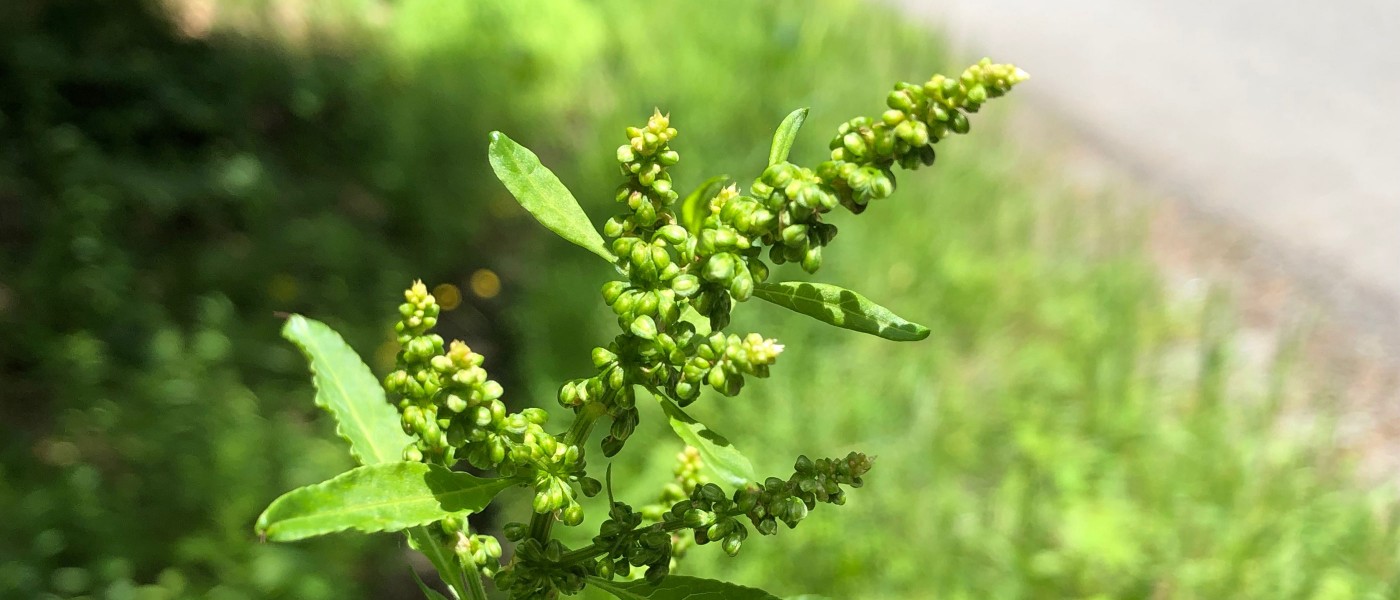Weed of the Month: Curly Dock
I have nothing good to say about curly dock. Many entries in the Weed of the Month column might be appreciated as wildflowers—blue violet and Queen Anne’s lace, for example—or harvested as greens, like purslane or lambsquarters. But Rumex crispus is nothing but a burly, exploitative menace, just waiting to take over the flower bed and vegetable garden.
In the lawn, its basal rosette crowds out the grass. Mow it and it grows back fast, poking well above the surrounding turf. Even if the entire plant top is removed, this tough perennial can regenerate from its strong, deep taproot.
I once encountered a couple of mature curly dock plants that had established themselves in the rich loam of an old garden I was renovating. I needed a deep bed for my asparagus patch and took my spade to the weeds, digging down around them and tugging hard at the crown. No luck. I dug some more and cleared as much soil as I could around the forked taproots…tugged some more. Still no go. It took me hours, and when I finally prized the entire, entwined root systems from the yard-deep hole I’d had to excavate, I dragged them over and nailed them to the side of the shed like an old-school farmer would the pelt of a fox to warn off other barnyard varmints. Not that the other curly dock in my garden paid any mind, but it gave me some satisfaction.
Left alone, curly dock will grow four feet or taller and produce thousands of seeds, which can spread by wind and water and by catching rides on passing animals. If they don’t find immediate purchase—and they can thrive almost anywhere—the seeds can remain viable for 50 years or more waiting for good conditions. A few birds and insects feed on the leaves and seeds, but most mammals leave it to proliferate.
A member of the buckwheat family (Polygonaceae), curly dock came over from Europe with early settlers, probably in the coats of livestock and mixed with crop seed, and quickly made itself at home throughout North America’s fields and lots, along roadsides, and anywhere else the soil has been disturbed. Various parts of the plant are edible in small amounts with careful preparation, and the roots are used in some homeopathic remedies. Nevertheless, curly dock is considered toxic to livestock and widely listed as a noxious weed.
Sometimes called yellow dock, this plant can be recognized by its long, wavy-edged dark green leaves—sometimes tinged with red—large at the base of the plant and becoming smaller toward the top of the single, jointed stem. In late spring, a slightly branched flower stalk forms, and over the summer, hundreds of tiny light yellow-green flowers bloom in whorls. Each flower produces one seed, and as it matures, its surrounding winglike husk of sepals turns brown and papery. Later in the season, the leaves die back, leaving a distinctive rust-brown seed stalk.
Persistent mowing will eventually eliminate curly dock in the lawn. To control it in the garden, dig out—don’t pull—individual plants as soon as they are discovered; once established, they’re hard to extricate. This is easier to accomplish when the soil is moist. Keep an eye out for sprouts from remaining roots missed the first time around.


